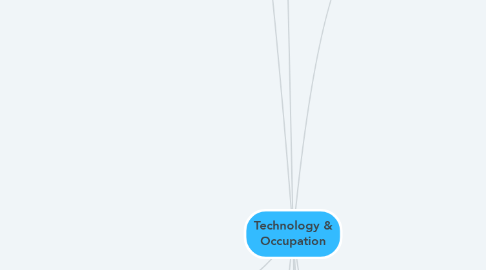
1. Motor Systems & SCI
1.1. Control Centers
1.1.1. Basal Ganglia
1.1.1.1. Disorders
1.1.2. Cerebellum
1.2. spinal cord
1.2.1. UMNs
1.2.1.1. Lateral
1.2.1.1.1. Lateral Corticospinal
1.2.1.1.2. Rubrospinal
1.2.1.2. Non-specific
1.2.1.3. Medial
1.2.1.3.1. Medial Corticospinal
1.2.1.3.2. Reticulospinal
1.2.1.3.3. Lateral Vestibulospinal
1.2.1.3.4. Medial Vestibulospinal
1.2.1.4. Wheel chair as a type of assistive technology (AT)
1.2.2. interneurons
1.2.3. LMNs
1.2.3.1. Skeletal Muscle
1.2.3.2. disorders
1.2.3.2.1. Lesion
1.2.3.2.2. Muscle Atrophy
1.2.3.2.3. Fibrillation
1.2.3.2.4. loss of reflexes
2. Vertical Systems
2.1. ANS and Stress
2.1.1. Technology
2.1.1.1. Heart Rate Monitors
2.1.1.2. Blood Pressure Cuffs
2.1.1.3. Blood Sugar Monitors
2.1.2. Parasympathetic
2.1.2.1. Rest & Digest
2.1.2.1.1. HR
2.1.2.1.2. BP
2.1.2.1.3. Bronchoconstriction
2.1.2.1.4. slows respiration
2.1.2.1.5. Pupillary constriction
2.1.2.2. Acetylcholine
2.1.3. Sympathetic
2.1.3.1. Fight or Flight
2.1.3.1.1. HR
2.1.3.1.2. BP
2.1.3.1.3. Bronchodilation
2.1.3.1.4. respiration
2.1.3.1.5. Pupillary dilation
2.1.3.2. Norepinephine
2.1.3.3. Horner's Syndrome
2.1.4. Autonomic Control
2.1.4.1. Hypothalamus
2.1.4.1.1. Equilibrium
2.1.4.2. Thalamus
2.1.4.3. Limbic System
2.1.5. Short term stress
2.1.5.1. HR
2.1.5.2. BP
2.1.5.3. Glucose to blood
2.1.5.4. Bronchodilation
2.1.5.5. Alertness
2.1.5.6. Digestive System Activity
2.1.5.7. Urine Output
2.1.5.8. MR
2.1.6. Long term stress
2.1.6.1. Retention of sodium & water
2.1.6.2. Blood volume & BP
2.1.6.3. Blood sugar
2.1.6.4. Weakened immune system
2.2. Spinomesencephalic Tract
2.2.1. Stimulus Awareness
2.3. Divergent Pathway
2.3.1. Spinolimbic Tract
2.3.1.1. Slow Pain
2.4. Somatosensation
2.4.1. Spinoreticular Tract
2.4.1.1. Arousal
2.4.2. Conscious Relay Pathway
2.4.2.1. DCML Tract
2.4.2.1.1. Conscious Proprioception
2.4.2.1.2. Discriminative Touch
2.4.2.2. Spinothalamic Tract
2.4.2.2.1. Temperature
2.4.2.2.2. Fast Pain
2.4.3. Unconscious Relay
2.4.3.1. Movement
2.4.4. Technology
2.4.4.1. Assistive Technology (AT)
2.4.4.1.1. Wheelchairs Pain & Movement
2.4.4.1.2. Prosthetics for Pain, Touch, & Movement
2.4.4.2. Therapeutic Technology (TT)
2.4.4.2.1. Heat / Cold for Pain & Temperature
2.4.4.2.2. Soft Tissue Mobilization for Pain & Touch
2.4.4.3. Environmental Technology (ET)
2.4.4.3.1. Outdoor Ramps for Touch & Movement
2.4.4.3.2. Grab Bars for Touch
3. Cerebrum, Memory, Attention, & Consciousness
3.1. Cerebrum
3.1.1. Diencephalon
3.1.2. Cerebral Cortex
3.1.3. Cortical Motor Planning Areas
3.1.4. Diseases
3.2. Memory
3.2.1. Working Memory
3.2.2. Declarative Memory
3.2.3. Procedural Memory
3.3. Attention and Consciousness
3.3.1. Disorders Affecting the Consciousness System
3.3.2. Limits of Attention
3.3.3. Intellect
3.3.4. Dementia
3.4. Occupation
3.4.1. OTPF
3.4.1.1. Mental Functions
3.4.1.1.1. Attention
3.4.1.1.2. Memory
3.5. Integration
3.5.1. environment
3.5.2. outside stimuli
3.5.3. external and internal factors
4. Communication
4.1. Verbal
4.1.1. hearing/auditory
4.1.1.1. auditory Cortex
4.1.1.1.1. Primary Auditory Cortex A1
4.1.1.1.2. Secondary Auditory Cortex A2
4.1.1.2. Technology
4.1.1.2.1. hearing devices
4.1.2. speech
4.1.2.1. sensorimotor cortex (speech muscles)
4.1.2.1.1. Dysarthria
4.1.2.2. Text-To-Speech Software
4.2. non-verbal
4.2.1. facial expression
4.2.1.1. ASD
4.2.2. Sign language
4.2.3. Gestures
4.2.4. Tone of voice
4.2.5. Posture
4.3. Language Disorders
4.3.1. Aphasia
4.3.1.1. Broca's Area
4.3.1.2. Wernicke's Area
4.3.1.3. Conduction
4.3.1.4. Global
4.3.2. Alexia
4.3.3. Agraphia
4.4. OTPF
4.4.1. Occupations
4.4.1.1. IADLS
4.4.1.1.1. Communication management
5. Basic Concepts of Neuroscience
5.1. Neuroexam & Imaging
5.1.1. Lesions
5.1.1.1. damage to the nervous system
5.1.1.2. may cause disabilites
5.1.1.3. lack of neural communication
5.1.2. Technology
5.1.2.1. CT, MRI, PET,
5.2. Neuronal Communication
5.2.1. synaptic communication
5.2.1.1. Neurotransmitters
5.2.1.1.1. gated membrane channels
5.2.1.2. Neuromodulators
5.2.2. synaptogenesis
5.2.2.1. activity dependent
5.2.2.2. synaptic stabilization
5.2.2.3. synaptic rearrangement
5.2.2.4. neuroplasticity
5.2.3. coordination of movement
5.3. Neuroplasticity
5.3.1. Disabilities
5.3.1.1. Stroke
5.3.1.2. Injuries
5.3.2. Technology
5.3.2.1. surgical technology
5.3.2.2. smart phones are changing our dailly behavior
5.3.2.3. no longer optional in our work, play, and self-care routine.
5.3.3. Ability of neurons to change function, chemical profile, and structure.
5.3.3.1. Habituation
5.3.3.2. Experience-dependent plasticity
5.3.3.3. Cellular recovery after injury
5.4. cellular processing
5.4.1. neurons
5.4.1.1. interactions between neurons
5.4.1.1.1. convergence
5.4.1.1.2. divergence
5.5. Support Systems
5.5.1. Meninges
5.5.1.1. Dura Mater
5.5.1.2. Arachnoid
5.5.1.3. Pia Mater
5.5.2. Cerebrospinal Fluid
5.5.2.1. flows through four ventricles
5.5.2.1.1. disorders of CSF
5.5.3. Cerebral blood supply
5.5.3.1. ACA
5.5.3.2. MCA
5.5.3.3. PCA
5.5.3.4. Disorders of blood supply
5.5.3.4.1. transcient ischemic attack
5.5.3.4.2. complete stroke
5.5.3.4.3. progressive stroke
6. Regional and special systems
6.1. Visual System
6.1.1. Sight
6.1.2. Cranial Nerves 3, 4, and 6
6.1.2.1. Disorders affecting the nerves
6.1.3. Eye movement systems
6.1.3.1. Gaze stabilization and Direction of Gaze
6.1.4. Technology
6.1.4.1. Preparatory methods and tasks
6.1.4.1.1. assistive technology
6.1.5. OTPF
6.1.5.1. Occupations
6.1.5.1.1. IADL's
6.1.6. Parallel processing
6.1.6.1. color
6.1.6.2. motion
6.1.6.3. shape
6.1.6.4. depth
6.2. Vestibular System
6.2.1. Peripheral Vestibular System
6.2.1.1. Disorders
6.2.2. Central Vestibular System
6.2.2.1. Disorders
6.2.3. Technology
6.2.3.1. Assistive equipment
6.2.4. OTPF
6.2.4.1. Occupations
6.2.4.1.1. ADL's
6.2.5. Rehabilitation in vestibular disorders
6.3. Brainstem/cranial nerves
6.3.1. 12 cranial nerves
6.3.2. Midbrain, Medulla, and Pons
7. Behavior & Emotion
7.1. Limbic System
7.1.1. Memory/Motivation
7.1.1.1. declarative memory
7.1.1.2. working memory
7.1.1.3. procedural memory
7.1.2. Olfaction
7.1.3. Visceral drives
7.1.4. Emotion
7.2. Decision-Making
7.2.1. OTPF
7.2.1.1. Social Participation
7.2.1.1.1. Behavioral and Psychochosocial skills
7.2.1.2. Performance Patterns
7.2.1.2.1. habits
7.2.1.2.2. roles
7.2.1.2.3. rituals
7.2.1.2.4. routines
7.2.2. decision-making loop
7.2.2.1. Participates in goal-directed behavior
7.2.3. Somatic Marker dysfunction
7.2.3.1. poor judgement
7.2.3.2. inappropriate social behavior
7.2.3.3. disinhibition
7.2.3.4. impulsivity
7.2.3.5. emotional lability
7.3. Medial Prefrontal Cortex
7.3.1. Emotion loop
7.3.1.1. reward seeking
7.3.1.1.1. Reward pathway
7.4. Ventral Prefrontal Cortex
7.4.1. Social behavior loop
7.4.1.1. self control, what's relevant

